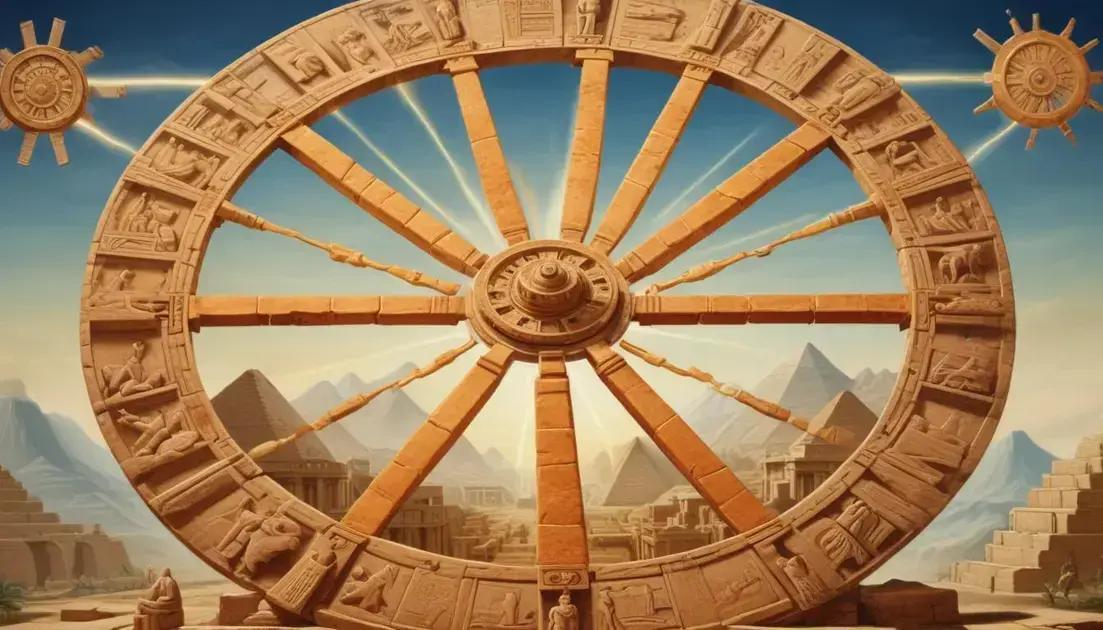
Axum and Red Sea Trade: Powerful Empire of Ancient Africa
The legacy of Axum greatly influences modern Ethiopia and Eritrea. As one of the first empires to adopt Christianity, Axum’s religious practices continue to shape contemporary faith in the region. Its impressive architecture, such as the famous obelisks, remains a symbol of pride and historical significance. The cultural traditions, including festivals and the use of the Ge’ez language, reflect the rich heritage of Axum, linking the past with today’s identity in both countries.
Axum, an ancient empire located in modern-day Ethiopia and Eritrea, played a pivotal role in the trade between Africa, Asia, and the Mediterranean. Its impact resonates even today.
Introduction to Axum and its significance in ancient trade
Axum was an important trading empire in ancient times. Located in what we now call Ethiopia and Eritrea, Axum connected people from different regions. Merchants traveled far and wide to trade goods. The city became wealthy from this bustling trade.
Goods like spices, gold, and textiles moved through Axum. This made it a vital link between Africa, Asia, and even the Mediterranean. As trade grew, so did Axum’s power. The empire developed its own currency, which helped further its economic influence.
Trade Routes and Influence
Axum’s trade routes were crucial for sharing ideas and cultures. Traders exchanged not just goods but also stories and beliefs. The spread of Christianity in the region was partly due to these interactions. This led to Axum being one of the first empires to adopt Christianity as a state religion.
A Key Player in Global Trade
Because of its strategic location, Axum played a key role in global trade networks. The empire influenced trade patterns that are still important today. Its merchants connected to other great civilizations, making it a melting pot of cultures.
The significance of Axum goes beyond trade. It shaped relationships between different regions and laid the groundwork for future empires and nations.
Understanding the Red Sea Trade routes
The Red Sea was crucial for ancient trade. It connected many different regions and cultures. Merchants used it to transport goods like spices, silk, and precious metals. Using ships, they traveled across the sea to trade.
These trade routes were busy and full of life. Cities along the coast grew wealthy from trade. Places like Axum and Adulis became important trading centers. They linked Africa with Asia and the Mediterranean.
Why the Red Sea Was Important
The Red Sea trade routes were important for several reasons. First, they allowed for the exchange of not just goods but also ideas. Cultures mixed and shared knowledge, which helped them grow.
Trade Goods and Their Value
Merchants traded many valuable goods along the Red Sea. Spices from India were highly sought after. They added flavor and preserved food. Precious metals like gold and silver also flowed through these routes, making many traders rich.
Another key trade item was textiles. Fine fabrics from Egypt and woolen goods were popular. These items were often transported to faraway lands, reaching markets across continents.
The Red Sea routes changed how people traded and interacted. They helped create a network that connected distant lands, leading to a rich and diverse trading culture.
The cultural impact of Axum on neighboring regions
Axum’s cultural impact spread far beyond its borders. As a bustling trade hub, it connected different peoples and traditions. This mixing of cultures enriched the region’s diversity. People shared their stories, art, and beliefs, influencing one another.
One of Axum’s biggest influences was with religion. The empire was among the first to adopt Christianity as the state religion. As a result, Christian teachings spread to neighboring areas. Missions often traveled to teach and share their faith.
Art and Architecture
Axum’s style influenced architecture in nearby regions. The famous stelae, or stone monuments, showcased their skills. These structures inspired local artisans to create similar works. Axum’s distinctive art blended local traditions with outside influences.
Language and Writing
Trade led to the exchange of languages too. The Ge’ez script, used in Axum, influenced how people wrote in neighboring areas. This helped unify various cultures through shared written communication.
Moreover, as traders interacted, they exchanged knowledge and goods. This exchange helped shape local cultures. New agricultural practices and technologies spread through these interactions as well. People learned from each other, improving their lives and communities.
In essence, Axum was a cultural bridge, connecting diverse groups and enriching their experiences. Its impact reached far and wide, leaving a legacy that shaped the region for generations.
Economic influence of Axum on ancient Africa
Axum had a powerful economic influence on ancient Africa. It became a major trading empire, connecting various regions. Merchants flocked to Axum to exchange goods like gold, ivory, and spices. This trade made Axum very wealthy.
As a trading hub, Axum set up trade routes that linked Africa with Asia and Europe. These routes allowed products and ideas to flow freely. More than just goods, people shared cultures, languages, and technologies.
Wealth and Currency
Axum was among the first to mint its own coins. These coins made trade easier and boosted the economy. Having a reliable currency helped standardize transactions. This encouraged even more trade and economic growth.
Impact on Neighboring Regions
The wealth of Axum attracted traders from various places. Neighboring kingdoms wanted to trade with them. This interaction influenced their economies too. They began to develop trade practices similar to Axum’s.
As Axum prospered, it helped support local agriculture. Farmers in the region produced more food. Increased food supply allowed for population growth and urbanization.
In short, Axum was a key player in shaping economic practices in ancient Africa. Its influence spurred trade and growth throughout the continent, leaving a lasting legacy.
Legacy of Axum in modern Ethiopia and Eritrea
The legacy of Axum is still felt in modern Ethiopia and Eritrea. This ancient empire laid the groundwork for both countries. Its history shaped their cultures, languages, and beliefs.
One of the most significant legacies is religion. Axum was one of the first empires to embrace Christianity. This influence remains strong today. Many Ethiopians and Eritreans continue to practice Christianity, linking back to Axum’s early adoption.
Architectural Influence
Axum’s impressive architecture, like the famous obelisks, can still be seen today. These monuments are symbols of pride and history. They attract visitors from all over the world, showcasing the empire’s ingenuity.
Cultural Heritage
The cultural traditions of Axum live on in modern customs. Festivals, music, and dances often reflect ancient practices. People celebrate their heritage, remembering the rich history of Axum.
Moreover, the Ge’ez language, once used in Axum, is still in use today. It’s Ethiopia’s liturgical language and represents an important connection to the past.
In summary, Axum’s legacy shapes modern identity in Ethiopia and Eritrea. Its historical impact continues to influence culture, religion, and pride across generations.
Conclusion
In conclusion, the legacy of Axum is a vital part of modern Ethiopia and Eritrea. This ancient empire shaped their cultures, religions, and identities. Its early adoption of Christianity still influences many people today. The impressive architecture and unique traditions of Axum continue to be sources of pride.
By remembering their history, both countries celebrate the rich heritage left behind by Axum. This connection to the past helps create a stronger sense of identity and community. As they look ahead, the story of Axum reminds them of their shared roots and the importance of preserving their culture for future generations.


